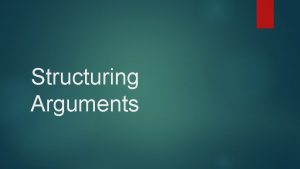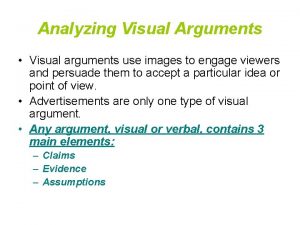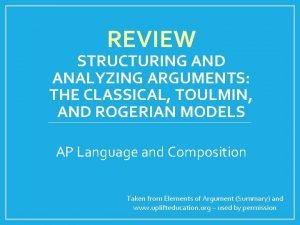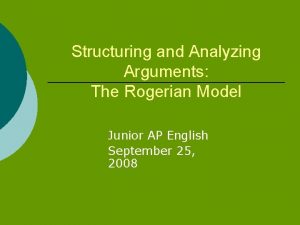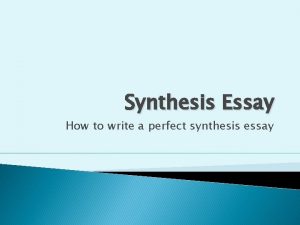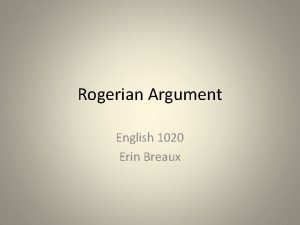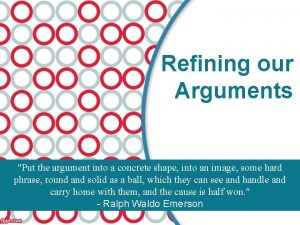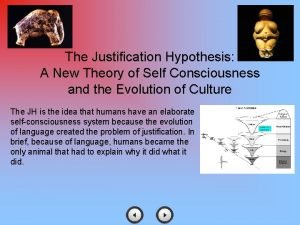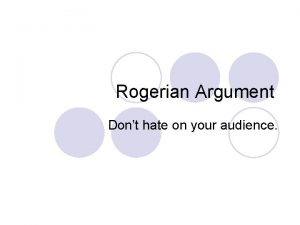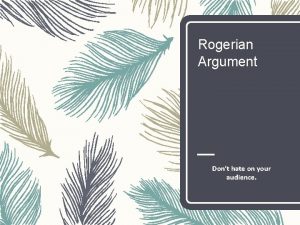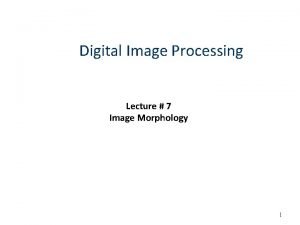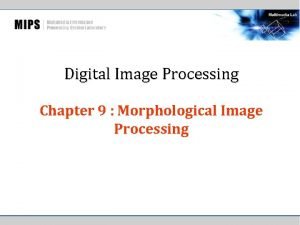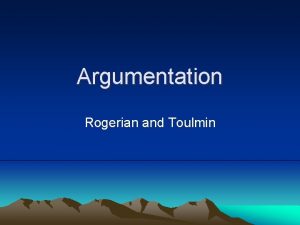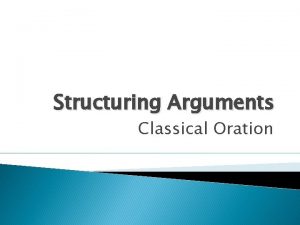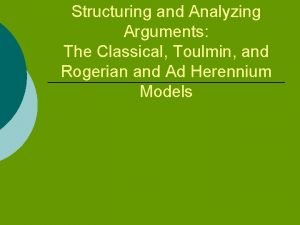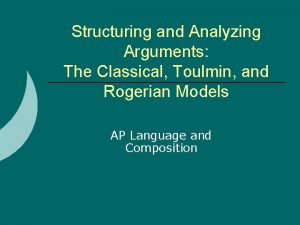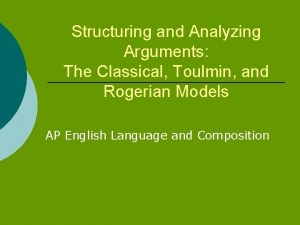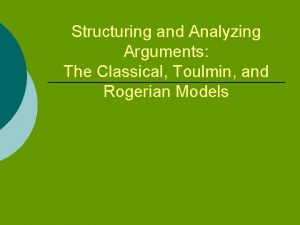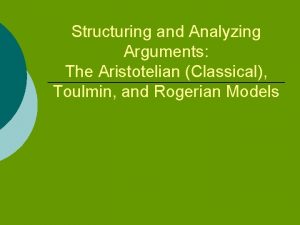Structuring and Analyzing Arguments The Rogerian Model AP

















- Slides: 17

Structuring and Analyzing Arguments: The Rogerian Model AP English 11

Rogerian Model ¡ Developed by psychologist Carl Rogers ¡ Emphasizes problem-solving and/or coming to a consensus ¡ Unlike in Classical argument, this is not an argument to win; instead, emphasizes a “win-win” solution benefiting both parties ¡ Useful in psychological and emotional arguments, where pathos and ethos dominate.

Benefits of Rogerian Argument ¡ ¡ Allows the author to appear openminded or even objective Appropriate in contexts where you need to convince a resistant opponent to at least respect your views

Rogerian Arguments: Structure ¡ ¡ ¡ Introduction: statement of problem to be solved or question to be answered Summary of Opposing Views: described using a seemingly objective persona Statement of Understanding: concedes circumstances under which opposing views might be valid Statement of Your Position (Thesis, Assertion, Claim, etc. ) Statement of Contexts: describes contexts in which your position applies/works well Statement of Benefits: appeals to self-interest of readers who may not yet agree with you; demonstrates how your position benefits them

Introduction: statement of problem to be solved or question to be answered ¡ Example(s) from “Is the College Use of American Indian Mascots Racist? ”

Summary of Opposing Views: described using a seemingly objective persona ¡ Example(s) from “Is the College Use of American Indian Mascots Racist? ”

Statement of Understanding: concedes circumstances under which opposing views might be valid ¡ Example(s) from “Is the College Use of American Indian Mascots Racist? ”

Statement of Your Position (Thesis, Assertion, Claim, etc. ) ¡ Example(s) from “Is the College Use of American Indian Mascots Racist? ”

Statement of Contexts: describes contexts in which your position applies/works well ¡ Example(s) from “Is the College Use of American Indian Mascots Racist? ”

Statement of Benefits: appeals to self-interest of readers who may not yet agree with you; demonstrates how your position benefits them ¡ Example(s) from “Is the College Use of American Indian Mascots Racist? ”

Practice ¡ See if you can go through the Rogerian framework with the following issue: l Polygamy

Introduction: statement of problem to be solved or question to be answered

Summary of Opposing Views: described using a seemingly objective persona

Statement of Understanding: concedes circumstances under which opposing views might be valid

Statement of Your Position (Thesis, Assertion, Claim, etc. )

Statement of Contexts: describes contexts in which your position applies/works well

Statement of Benefits: appeals to self-interest of readers who may not yet agree with you; demonstrates how your position benefits them
 Structuring arguments
Structuring arguments Diagramming short arguments
Diagramming short arguments Visual arguments images
Visual arguments images Rogerian vs toulmin
Rogerian vs toulmin The rogerian model
The rogerian model Rogerian essay example
Rogerian essay example Theory of martha rogers
Theory of martha rogers Rogerian model
Rogerian model Rogerian model example
Rogerian model example Argument
Argument Rogerian filter
Rogerian filter Rogerian argument outline
Rogerian argument outline Example of rogerian argument essay
Example of rogerian argument essay Rogerian psychotherapy
Rogerian psychotherapy Rogerian triad
Rogerian triad Structuring system process requirements
Structuring system process requirements Image erosion
Image erosion Structuring element
Structuring element
